The Legal Services Corporation (LSC) is the single largest funder of civil legal aid for low-income Americans in the United States. LSC supports independent nonprofit legal aid programs with nearly 800 offices across the nation. LSC is headed by a bipartisan board of directors whose members are appointed by the President and confirmed by the U.S. Senate.
On April 14th, 2015, LSC convened a forum at the White House on increasing access to justice with senior officials from the Obama Administration, chief justices, business executives, and other distinguished leaders. Here are the slides and transcript of my presentation at the White House Forum on Increasing Access To Justice.
Updated May 8, 2015: Updated to include a video of my presentation.
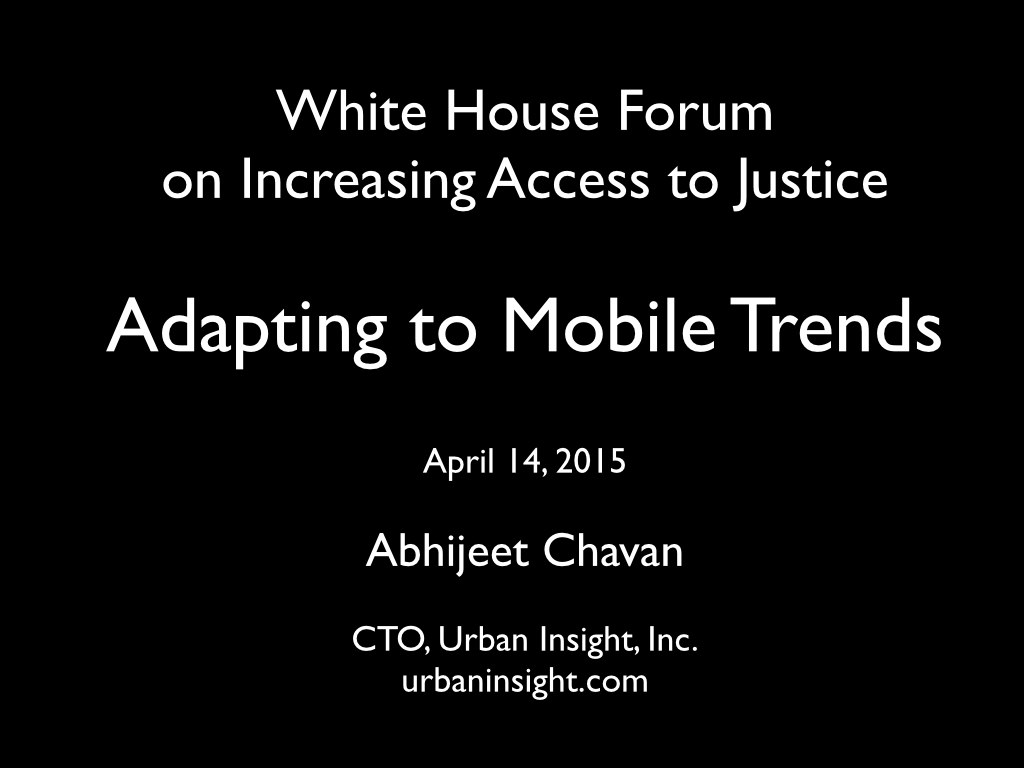
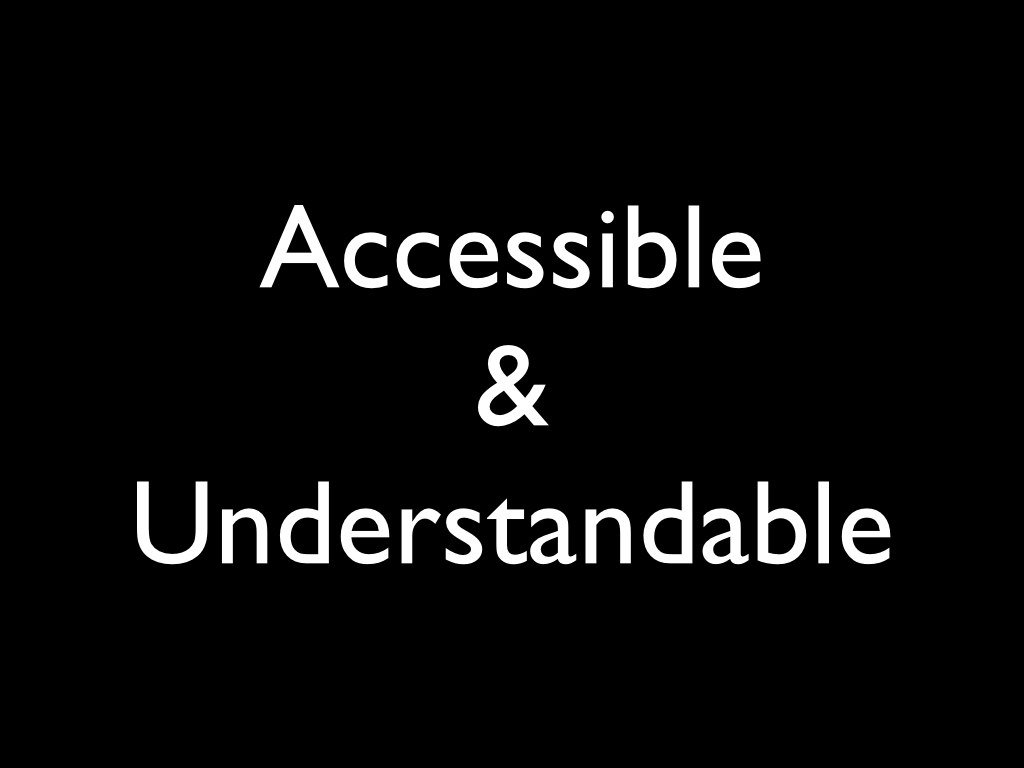
Legal services websites need to be both accessible and understandable in order to serve those that are seeking legal assistance. I will show you three tools we have developed to help make legal services websites more effective.
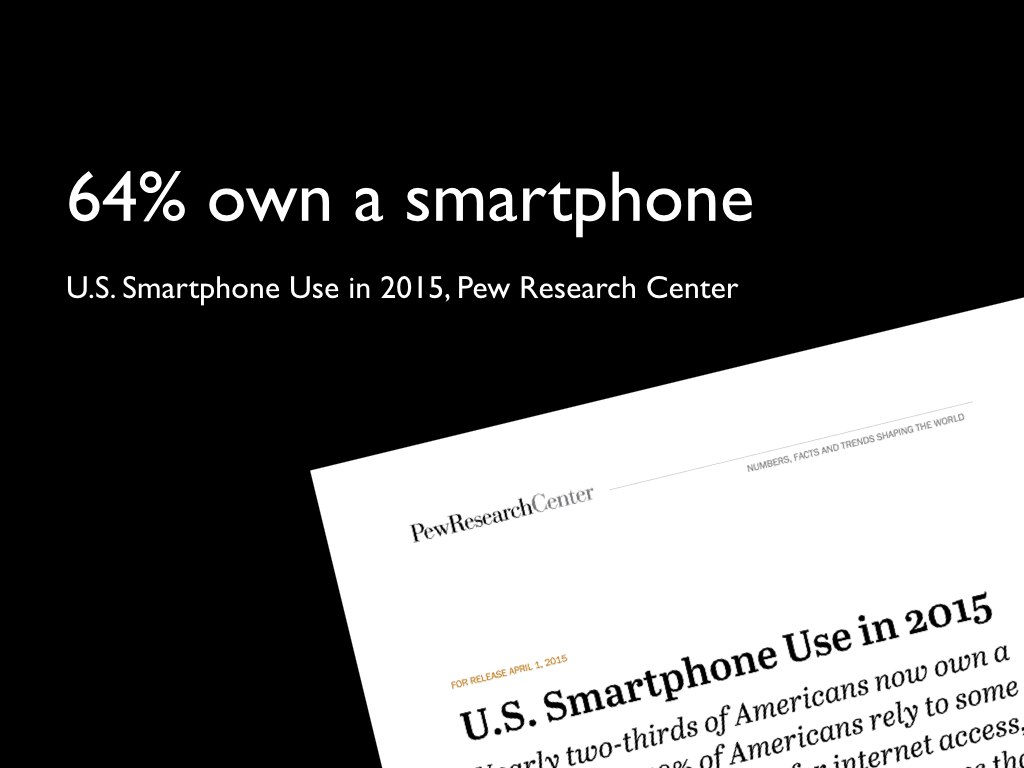
According to a study published by the Pew Research Center just two weeks ago, nearly two-thirds of American adults own a smartphone. But we don’t use them just for phone calls and texting. Smartphones now play a central role in most peoples’ lives.
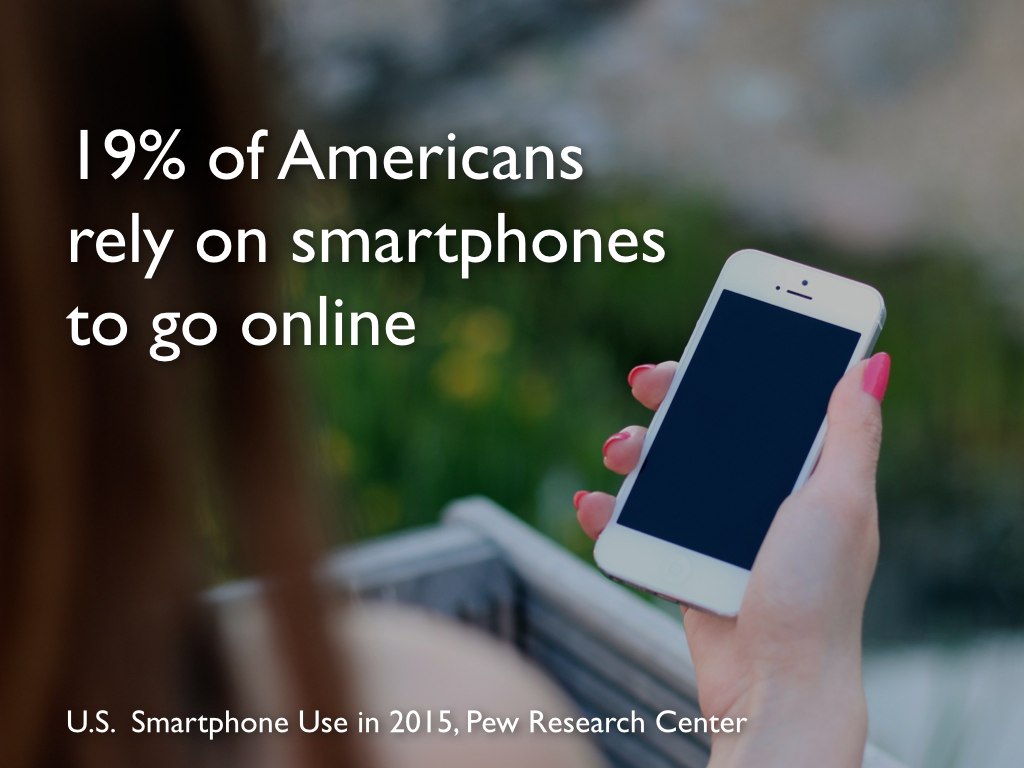
Americans use smartphones for important life activities — looking up health information, online banking, looking for a job, and accessing government information. The study found that 19% of Americans rely on their smartphones to go online.
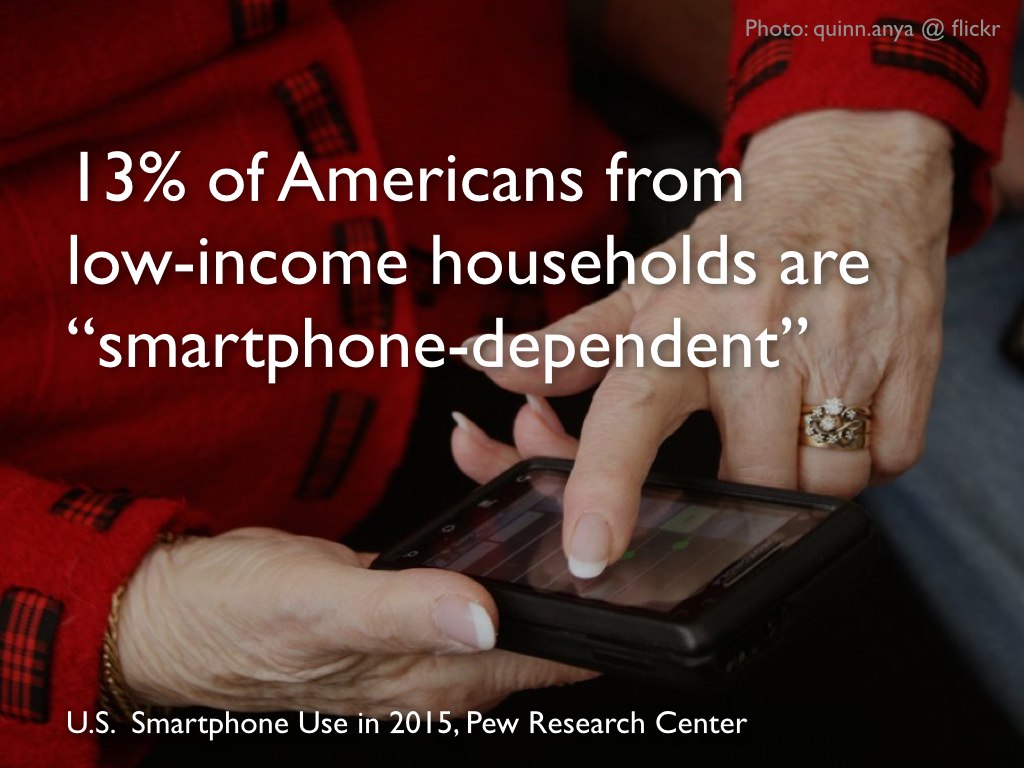
For many, their smartphone is their primary or only way to go online. They are “smartphone-dependent”. 13% of Americans in households earning less than thirty-thousand per year are smartphone-dependent.
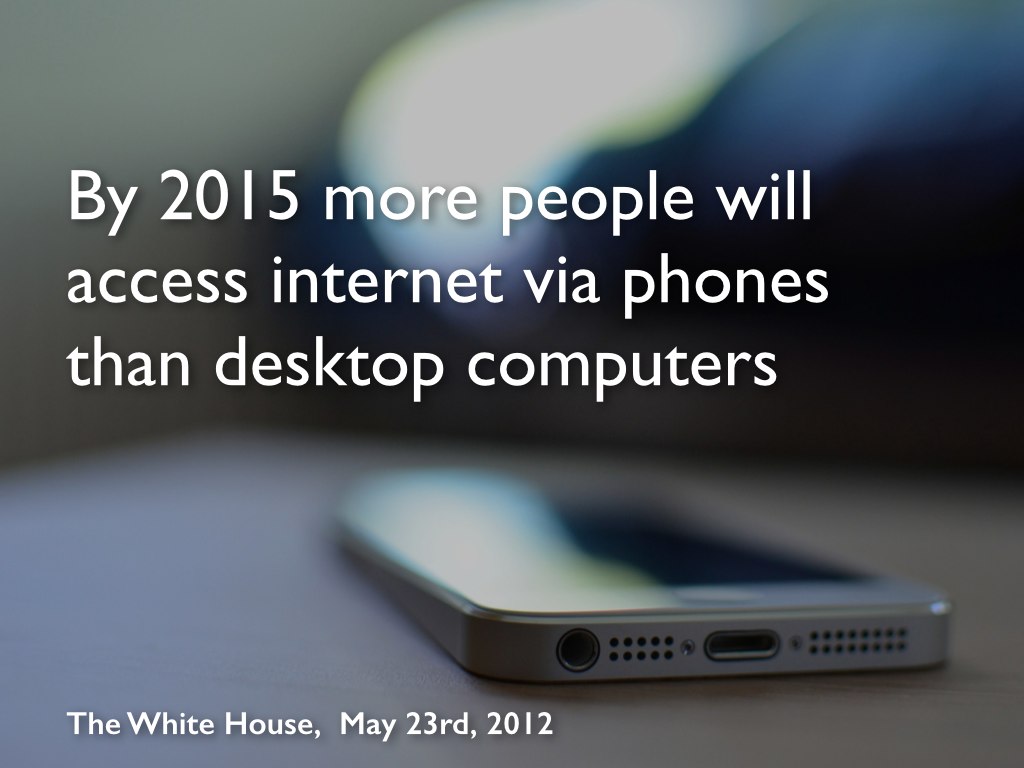
Three years ago, the White House projected that by 2015, more people will access the Internet via smartphones rather than desktop computers. That prediction is coming true for legal services. People are increasingly accessing legal services websites using smartphones.
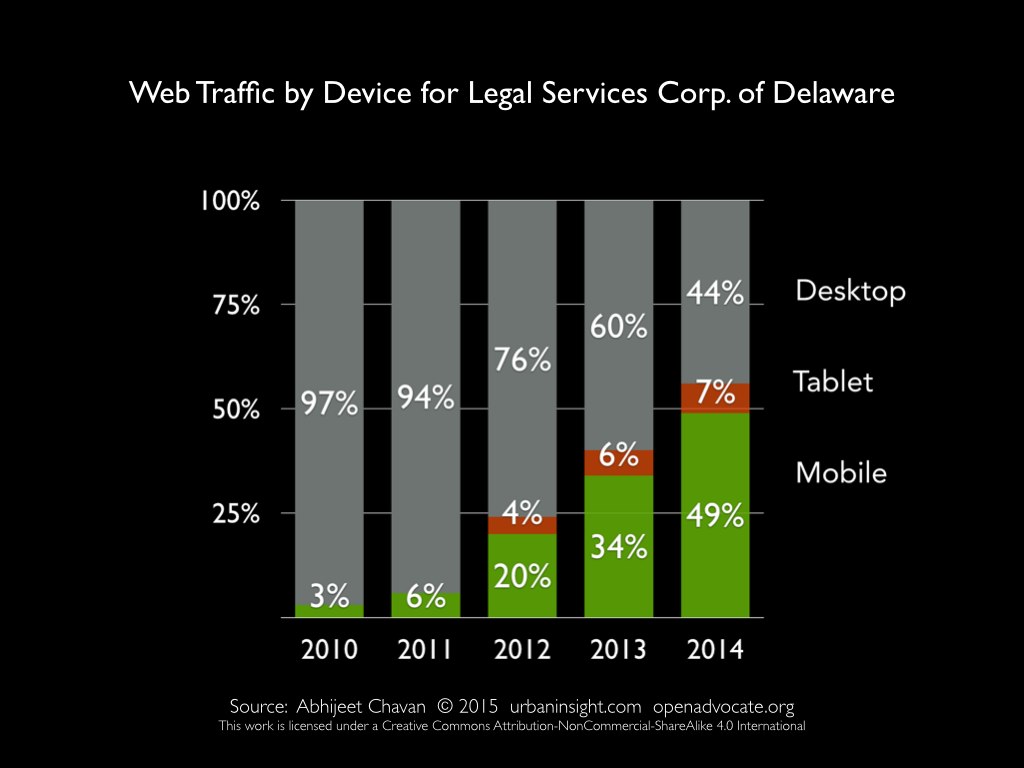
For example, five years ago the Legal Services Corporation of Delaware (LSCD) received 3% of its web traffic from mobile devices. Today, mobile traffic has grown to 56%. Just 44% of web traffic is from desktop computers.
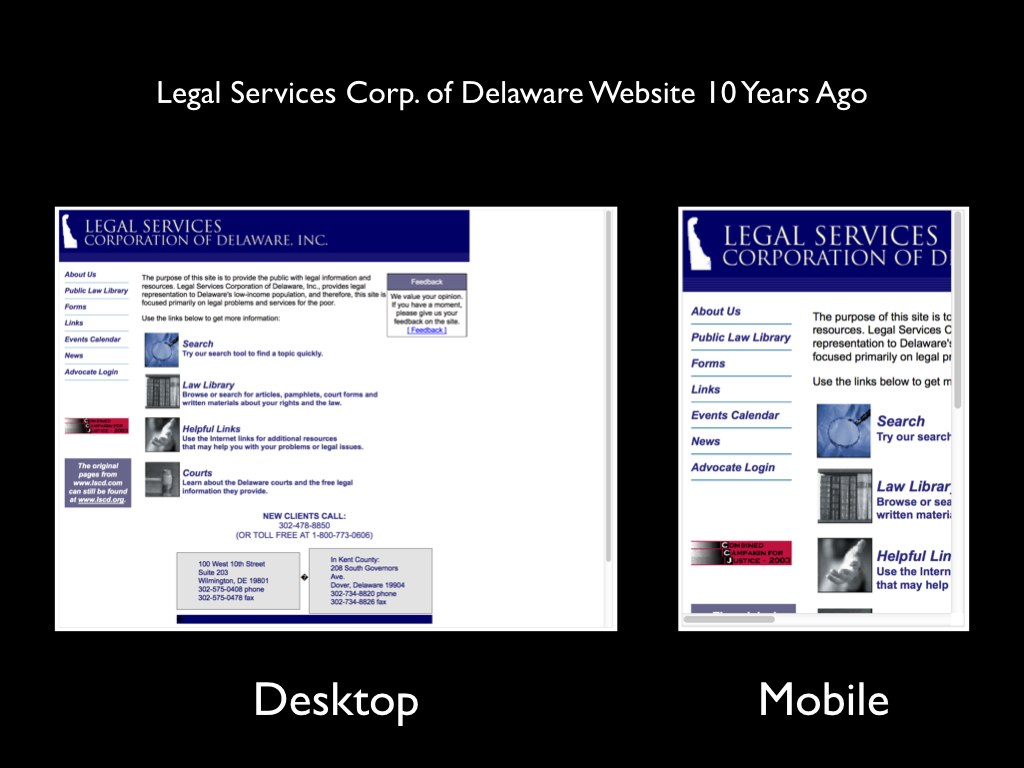
Older legal services websites were not designed to be read on smartphones and cannot adapt to their smaller display sizes. They may now be difficult to use or may not even work on smartphones. How do we make them mobile-friendly?
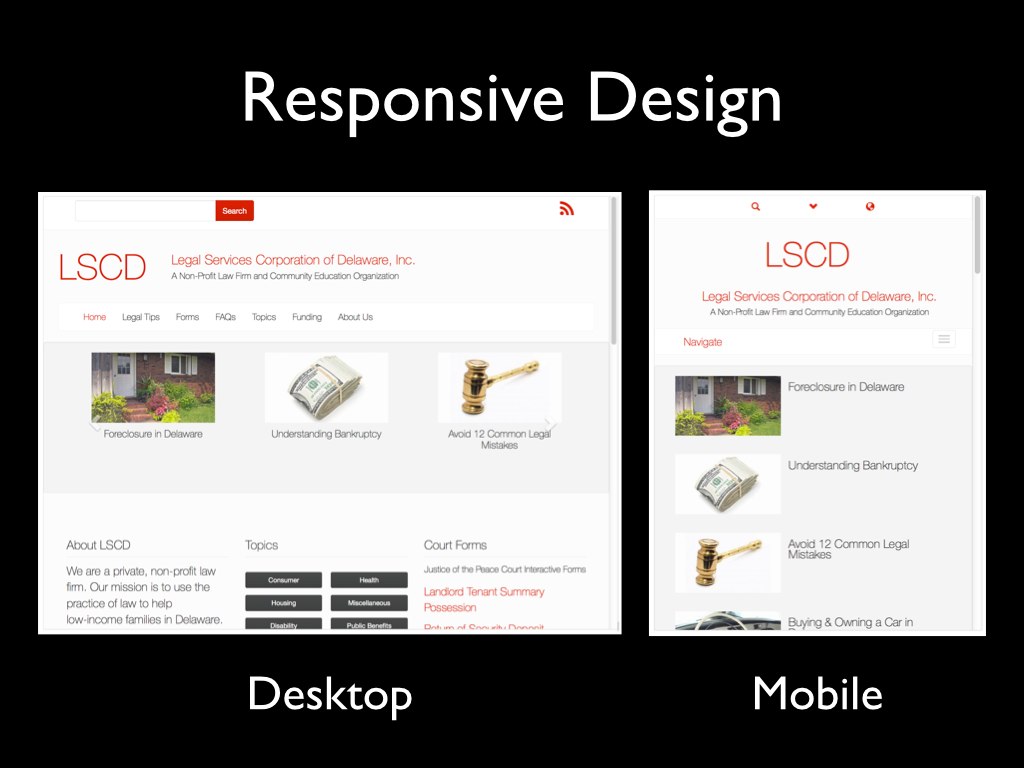
The solution is to use a technique called responsive design. In Responsive Design, the website adapts to the size of the display so it is usable on different devices. Four years ago, we built the first responsive legal services website for Delaware’s statewide LSC program.
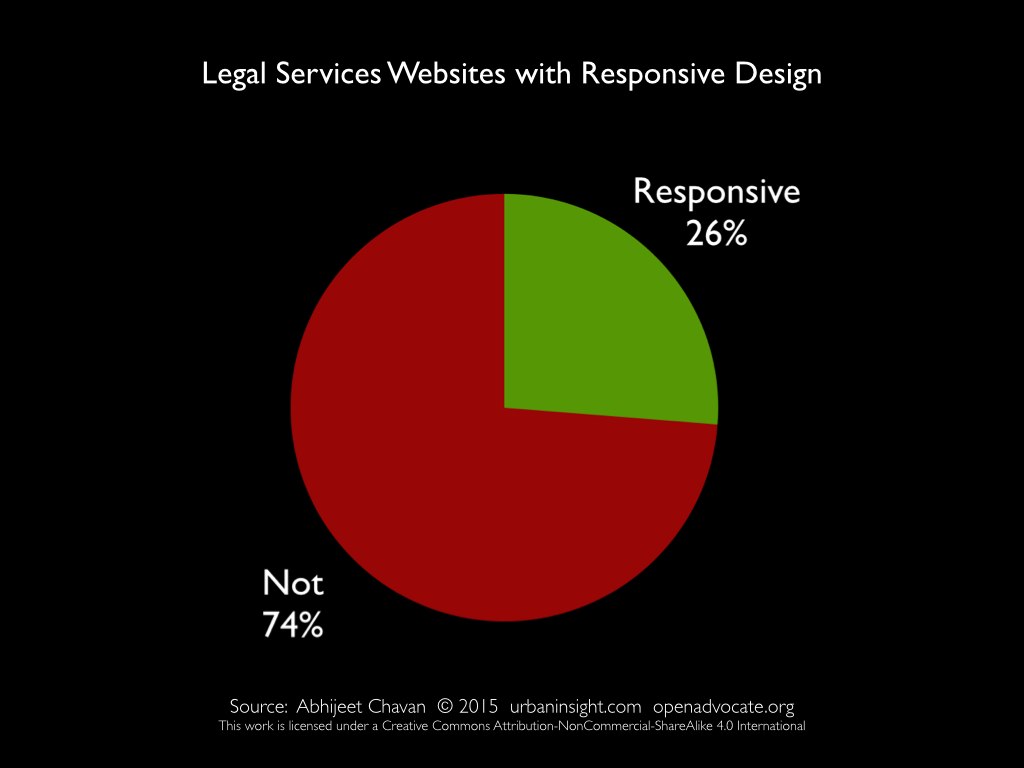
Since then, some LSC programs have started making their websites mobile-friendly. Today, 26% of legal services websites are using responsive design. With support from LSC, we have built a new software platform to help the others adopt responsive design.
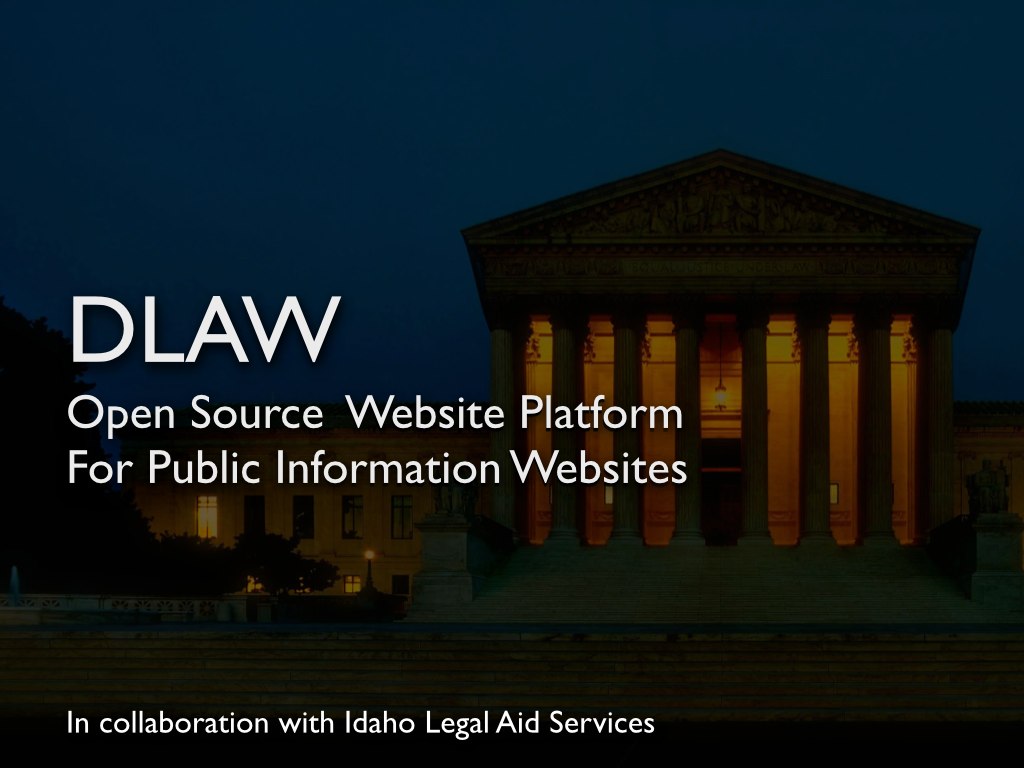
It’s called DLAW and it is a platform for running public information websites. DLAW uses responsive design, and other industry best practices, to make legal services websites more effective in reaching those that rely on smartphones.
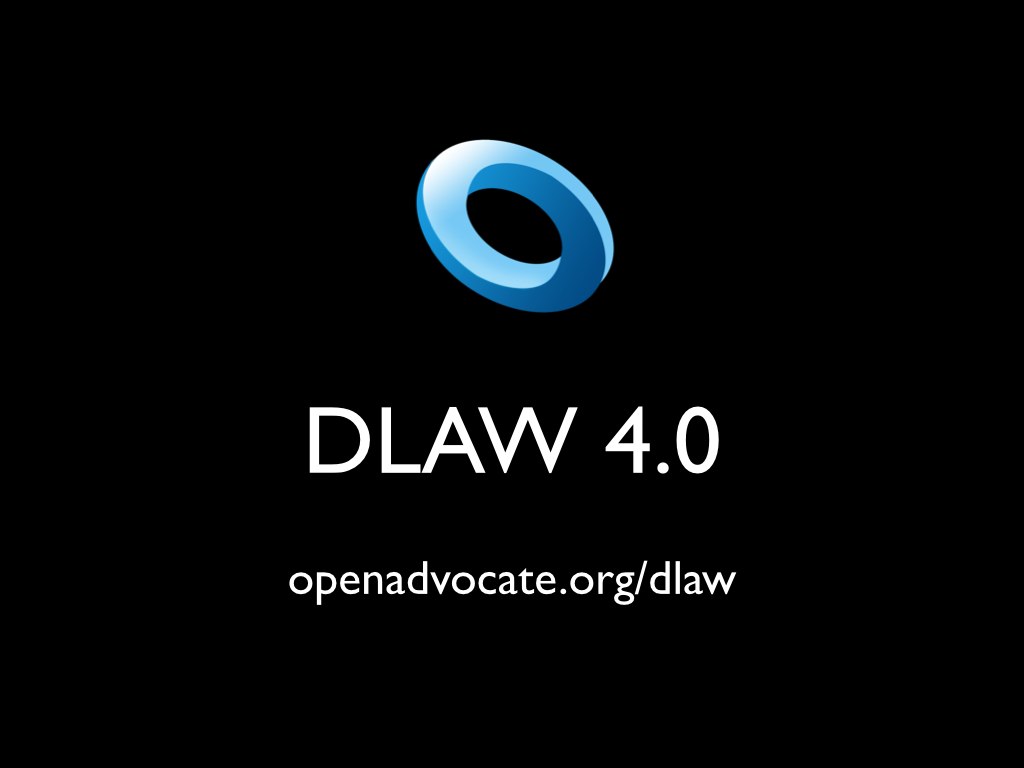
I am happy to announce that today we are releasing DLAW Version 4.0. It is open source software — this means anyone can download, use, and customize it for free. While we designed it for LSC programs, other non-profits,and even the courts can use DLAW to run public information websites.
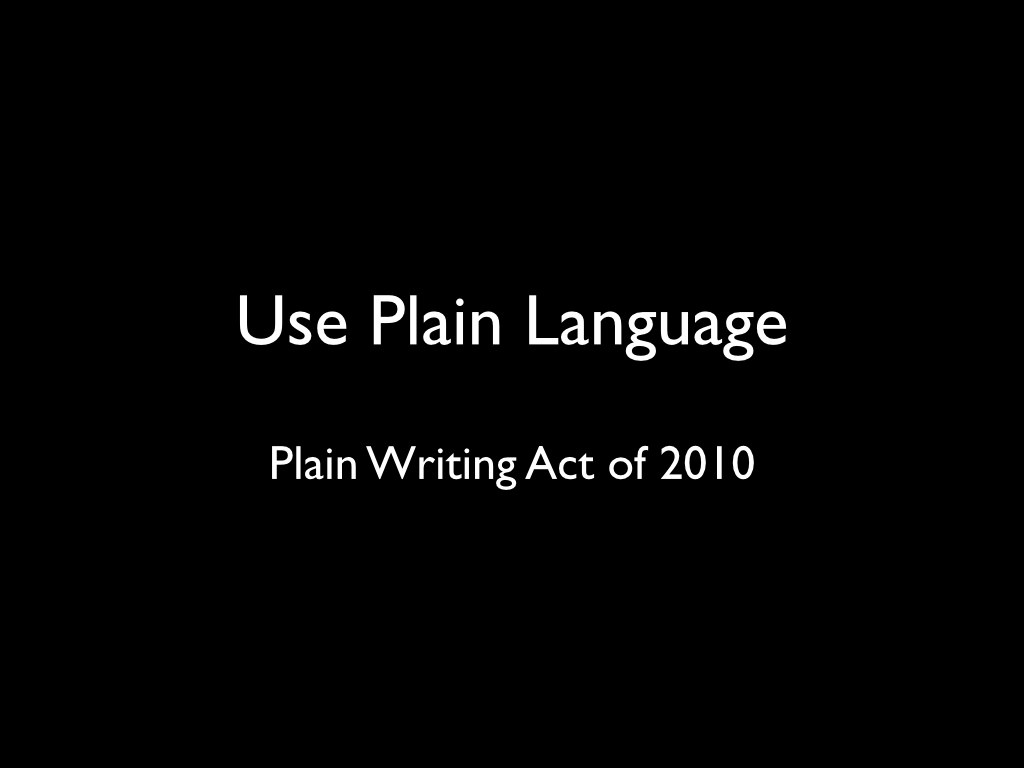
A website’s content also needs to be understandable. The best practice is to adopt the principles of the Plain Writing Act. Plain Language content is helpful to readers with low literacy and those for whom English is a second language.
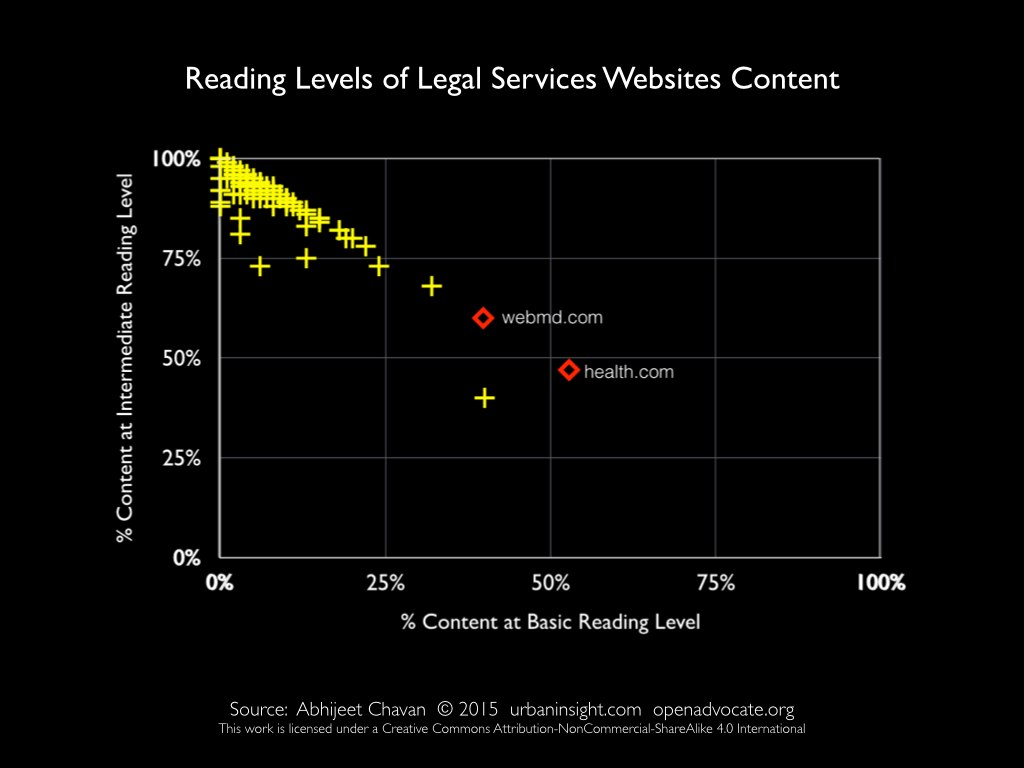
Most legal services sites have web content at the intermediate or higher reading levels. They need to refine web content to make more of it available at the basic reading level — similar to websites that provide health information to the general public.
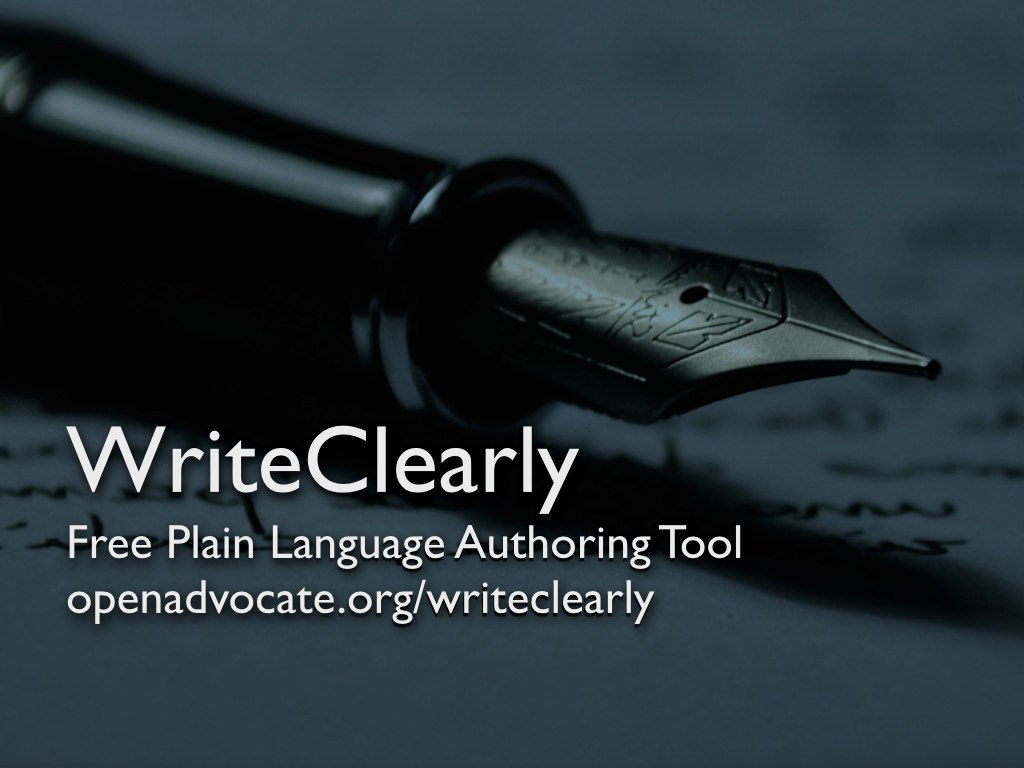
To help legal services websites adopt plain language, we built WriteClearly. It is a free plain language authoring tool for website editors. It can help them refine their website content to make it more readable using plain language.
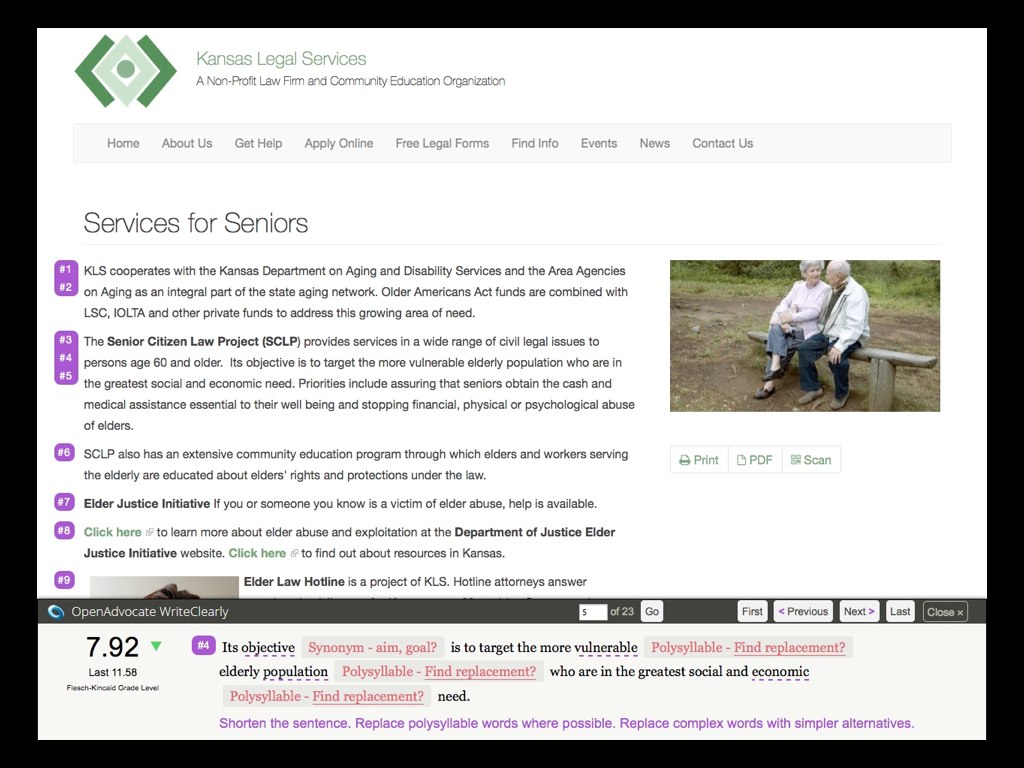
WriteClearly analyzes the reading grade level of a web page. It highlights long sentences and complex words, and offers suggestions for improving readability. While we designed it specifically for LSC programs, it is free for anyone to use.
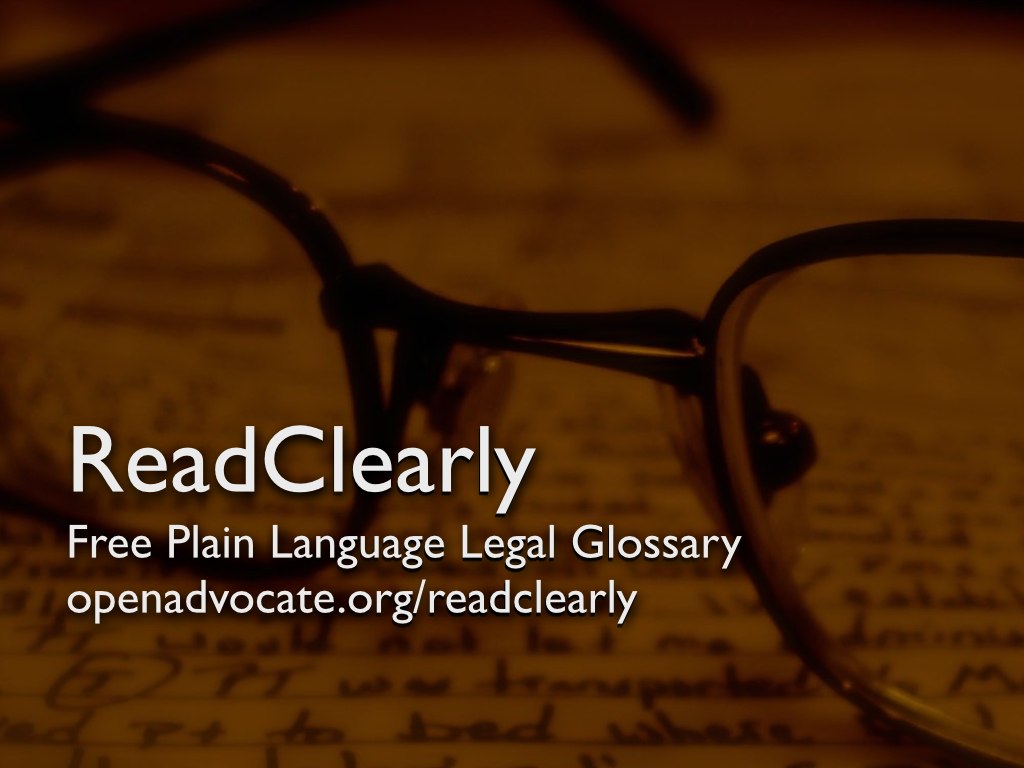
We also built ReadClearly — a free, plain language, legal glossary for websites. ReadClearly explains complex legal words on a website in simple plain language. Anyone can install it on their website by adding a small code snippet to their website.
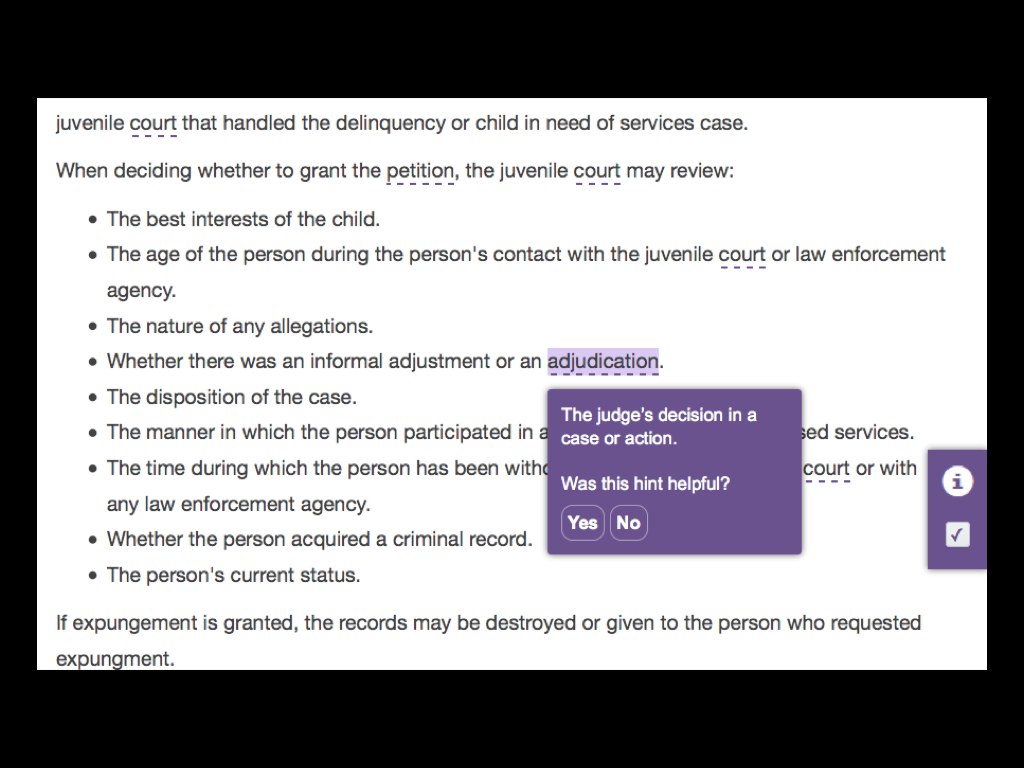
When a reader is visiting the website, ReadClearly highlights complex legal words. The reader can the click on the word to see an explanation in plain language. While designed for LSC programs, any legal services or court website can use ReadClearly.
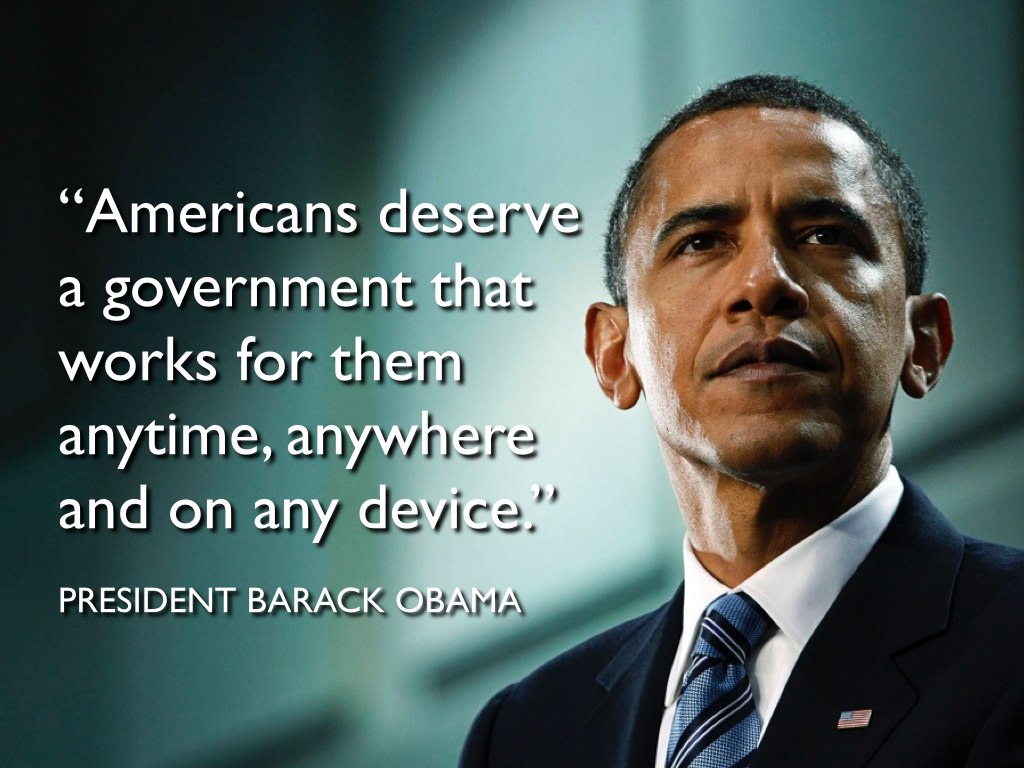
President Obama has said: “Americans deserve a government that works for them anytime, anywhere and on any device.” By supporting the development of these three innovative tools LSC is making that happen.
Acknowledgements
Urban Insight developed DLAW in collaboration with Mary Zimmerman and Steve Rapp of Idaho legal Aid Services. We developed WriteClearly and ReadCleary in collaboration with Jeff Hogue and Anna Hineline of Legal Assistance of Western New York, Inc (LAWNY). Development of these tools is funded in part by LSC's Technology Initiative Grants and by contributions from Urban Insight, Inc. Thanks to Glenn Rawdon of the Legal Services Corporation (LSC) for making this presentation possible.
Resources
- U.S. Smartphone Use in 2015, Pew Research Center, April 1, 2015.
- Obama Administration Launches Sweeping Shift to Mobile, The White House, May 23, 2012.
- Best Practice Benchmarking For Legal Services Websites 2015, Abhijeet Chavan, January 19, 2015 (Latest Edition: Best Practice Benchmarking For Legal Services Websites 2017)
- Using Technology To Enhance Access to Justice: Mobile Strategies for Legal Services, Abhijeet Chavan, Harvard Journal of Law & Technology, Volume 26, Number 1 Fall 2012. (PDF)
- Plain Language: It's The Law, plainlanguage.gov.
- Drupal for Legal Aid Websites (DLAW)
- OpenAdvocate WriteCleary
- OpenAdvocate ReadClearly
- Twitter: @LegalAidTech


